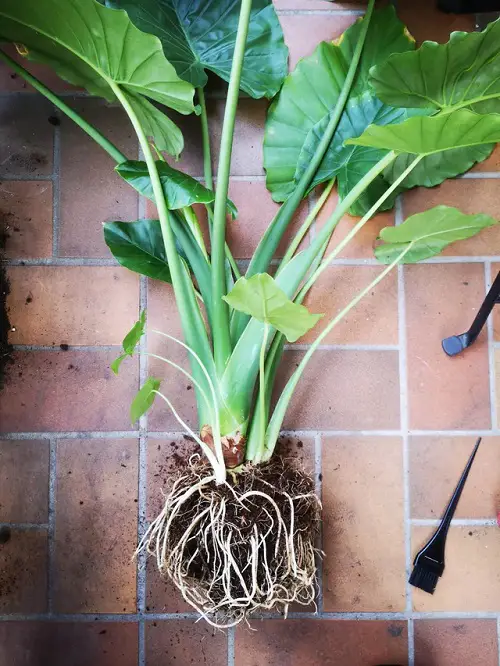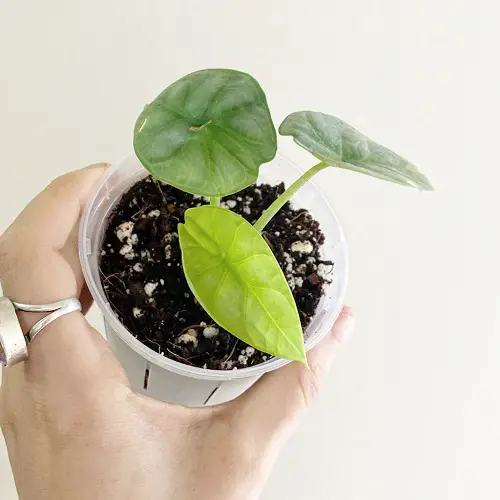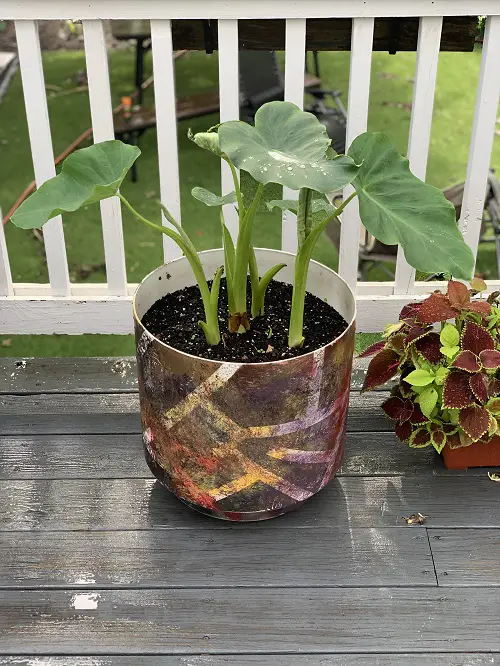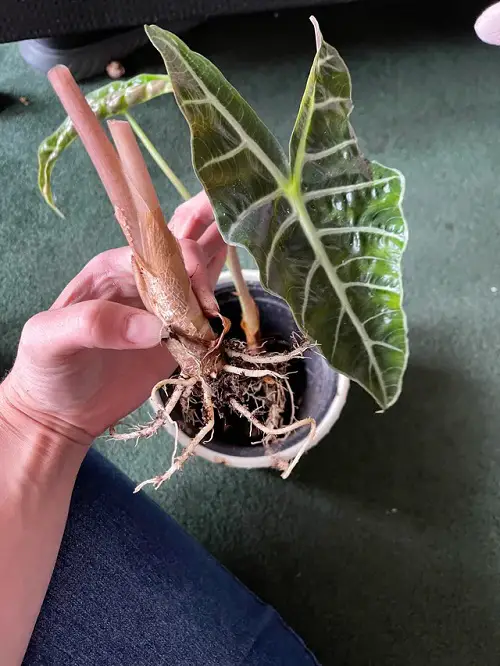Thinking about Propagating Elephant Ear Plants? Here are the easiest ways to do it for more of this big foliage plant in your collection!

When it comes to propagating elephant ears, you don’t have just one, but many methods! However, it is essential to pick the right one to ensure you multiply them in a correct manner.
Check out 26 Different Alocasias in Water here
Different Methods on How to Propagate Elephant Ear Plant
1. Division

This is one of the easiest and most direct methods to propagate an elephant ear:
Start by watering the plant well a day before the division to minimize stress. Carefully dig around the root ball and remove the entire plant from the ground or pot the next day.
Look for separate crowns or natural divisions and separate them in a way that each section will have both roots and at least one leaf. Use a clean, sharp knife to remove individual divisions and plant them in your desired pot or garden bed.
It depends on the climate you’re doing this but late winter to early spring, when the plant is dormant or just coming out of dormancy, is the best time to do it.
Check Plants that Look like Elephant Ears But are Not here
2. By Offsets or Pups
This is the simplest method, as all you need to do is remove the offsets or pups growing around the base of the mother plant and then plant them in a new pot—as simple as that!
You can do it any time of the year when you notice the plant growing too much of these!
Is Elephant Ear Sap Poisonous? Find here
3. Using Stem Cuttings

This might not be as successful as the division method, but it is surely less cumbersome!
Start by selecting a healthy stem section that’s about 5-7 inches long with a leaf. Dip the cut end in a rooting hormone and plant it in a pot filled with well-draining potting mix.
It’s actually the least practical and popular method because the leaves are quite large, and it can take months for the cutting to form roots.
Do this from spring to summer during the plant’s active growth season for the best result. If you live in a tropical climate, try this during the wet and humid weather.
Do you Know: You can also put them in water to root.
4. By Tuber Method (for Colocasia)

This method is the same as division; the only difference here is you look for healthy tubers!
Take the parent plant out of the pot or garden bed and look for healthy tubers. Separate them using a clean knife and allow the cut part to heal for a day—this will eliminate the risk of rot. Now, dip the cut end in a rooting hormone and plant in a new pot.
For best results, do this in late winter or spring, when the plant is just coming out of its dormancy.


